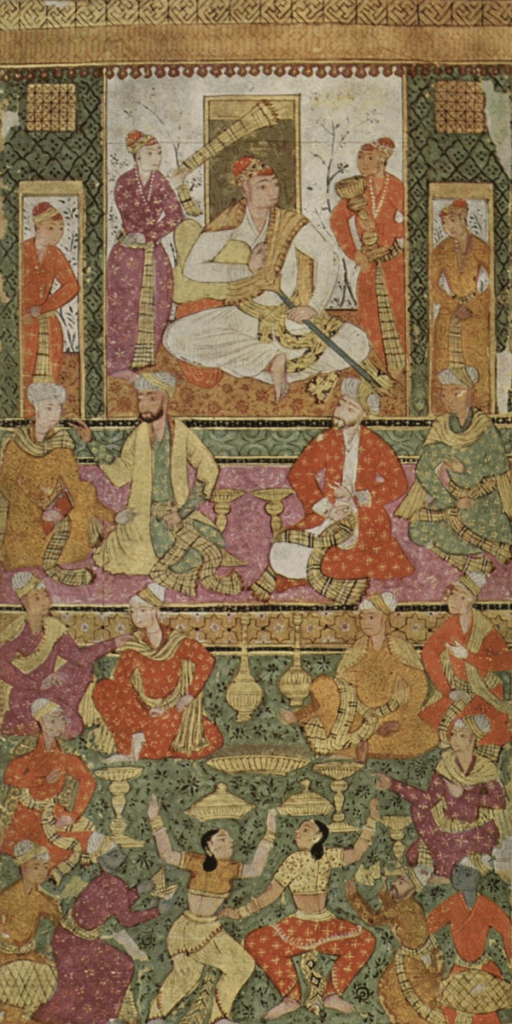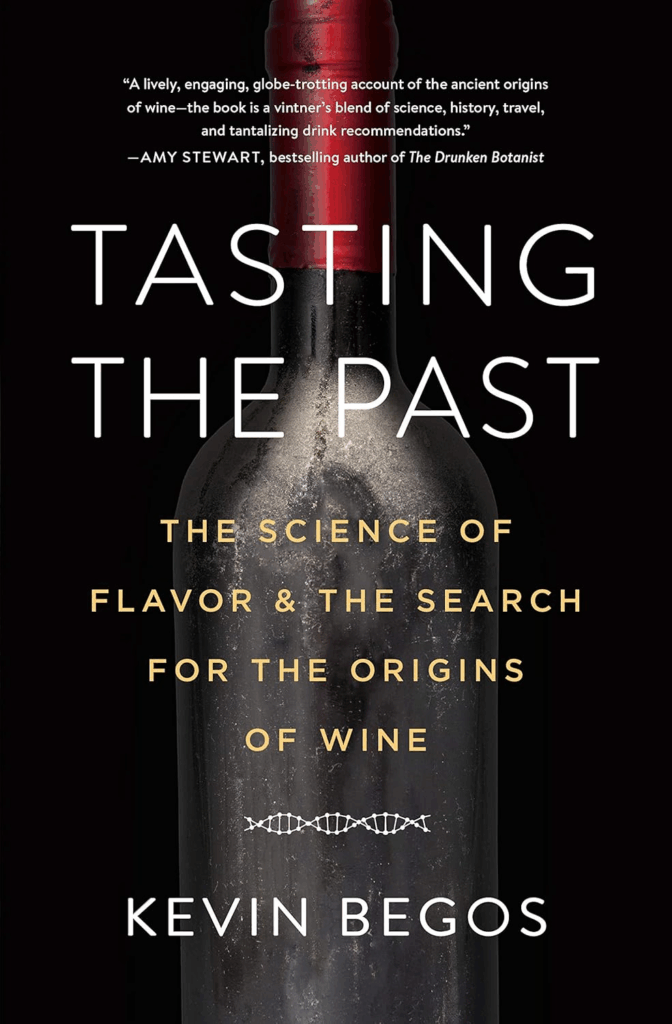
| Title | Tasting the Past: The Science of Flavor & the Search for the Origins of Wine |
| Author | Kevin Begos |
| Publisher | Algonquin Books of Chapel Hill (Hachette) |
| Date | June, 2018 |
| ISBN | 978-1616205775 |
| Pages | 288 |
| Summary | In search of a mysterious wine he once tasted in a hotel room minibar, journalist Kevin Begos travels along the original wine routes—from the Caucasus Mountains, where wine grapes were first domesticated eight thousand years ago, crossing the Mediterranean to Europe, and then America—and unearths a whole world of forgotten grapes, each with distinctive tastes and aromas. We meet the scientists who are decoding the DNA of wine grapes, and the historians who are searching for ancient vineyards and the flavors cultivated there. Begos discovers wines that go far beyond the bottles of Chardonnay and Merlot found in most stores and restaurants, and he offers suggestions for wines that are at once ancient and new. |
| Preview | Audible Audio Book (8h30m) |
| Shop | Algonquin Books (Hachette) |
About the Author
Kevin Begos (1958-2021) was a freelance writer, editor and photographer with published articles in the New York Times, Scientific American, The Washington Post, Harper’s (amongst others), a former correspondent for the Associated Press and more recently mayor of Apalachicola, where he started his career as reporter a few decades before. Begos regularly wrote about science, energy, the environment, wine, and food, and hosted podcasts on these topics and won multiple awards.
- Ancient churches and origins of wine in Republic of Georgia by Kevin Begos – Associated Press, 2018
- Alumni Notes: Remembering Kevin Begos, Award-Winning Reporter and Author – by Knight Science Journalism, 2021
- Obituary
- Kevin Begos (LinkedIn)
- Against Their Will: North Carolina’s Sterilization Program and the campaign for reparations – 2012 [978-0941062169]
About the Book
Tasting the Past by journalist Kevin Begos is a blend of travel narrative, historical investigation, and scientific exploration that traces wine’s ancient origins while challenging conventional wine industry wisdom.
The book originates from Begos’ 2008 discovery of Cremisan, a Palestinian red wine in his Amman hotel minibar. This wine, made by Salesian monks from indigenous Middle Eastern grape varieties with unfamiliar names, sparked a decade-long quest across continents and through millennia of wine history.
Working with experts like Patrick McGovern and Swiss geneticist José Vouillamoz, Begos traces wine’s birthplace to the Caucasus Mountains 8,000 years ago. Using modern techniques like DNA analysis and liquid chromatography, researchers have identified a “mother” wine grape whose genetics link to vineyards worldwide.
The book systematically demolishes wine industry dogma, revealing that “noble” French grape varieties aren’t inherently superior. Begos advocates for indigenous varieties, noting that while thousands of grape types exist globally, most commercial wine comes from only about a dozen varieties.
A major discovery for Begos was yeast’s crucial role in determining flavor—something he “never suspected” initially. The book explores how different yeast strains significantly impact wine character and relate to terroir concepts. Traditional techniques like fermentation in clay amphorae are experiencing renaissance among natural wine producers.
Following wine’s historical spread from the Caucasus through the Mediterranean to America, Begos highlights Oregon as potentially “the epicenter of wine innovation in America.” Pioneers like Randal Grahm are developing new varieties adapted to specific climates and sites. The book argues that indigenous varieties may be better suited to local climates than imported European grapes, especially as climate change challenges traditional viticulture.
Combining rigorous journalism with personal narrative and includes wine recommendations extending “far beyond endless bottles of Chardonnay and Merlot.” Critics praised it, recognizing its advocacy for grape diversity and challenge to industry homogenization.
Tasting the Past presents wine as a window into human history, migration, and cultural exchange spanning millennia. From a hotel room discovery to ancient monasteries and cutting-edge laboratories, Begos reveals how wine connects us to our ancestors while pointing toward a more diverse, sustainable viticultural future.
Reviews
- Tasting the Past Review: Uncorking the World – by Peter Hellman, WSJ 2018
- Tasting the Past, book review – by Tamlyn Currin, JancisRobinson.com 2018
- Book review: Kevin Begos, Tasting the Past – by Simon Woolf, The Morning Claret 2018
- An intoxicating journey uncorks Holy Land’s 5,000-year history of winemaking by Rich Tenorio, Times of Israel 2018
Bibliography
A selection
- Alice Fiering, For the Love of Wine; My Odyssey Through the World’s Most Ancient Wine Culture. Potomac Books, 2016
- Alice Fiering, Naked Wine: Letting Grapes Do What Comes Naturally. Da Capo Press 2011
- Jamie Goode, The Science of Wine, From Vine to Glass, 2014
- Jamie Goode and Sam Harrop, Authentic Wine Toward Natural and Sustainable Winemaking, University of California Press 2011
- Paul Lukacs, Inventing Wine: A New History of One of the World’s Most Ancient Pleasures, W. W. Norton & Company 2012
- Kermit Lynch, Adventures on the Wine Route: A Wine Buyer’s Tour of France, Farrar, Straus and Giroux, 1988
- Patrick E. McGovern, Uncorking the Past: The Quest for Wine, Beer, and Other Alcoholic Beverages, University of California Press 2009
- Patrick E. McGovern, Ancient Wine: The Search for the Origins of Viniculture, Princeton University Press 2019
- Rod Phillips, Alcohol: A History, University of North Carolina Press 2014
- Rod Phillips, French Wine: A History, University of California Press, 2016
- Michael Pollan, The Botany of Desire: A Plant’s-Eye View of the World, Random House Publishing Group 2001
- Jancis Robinson, Julia Harding, José Vouillamoz, Wine Grapes: A Complete Guide to 1,368 Vine Varieties, Including Their Origins and Flavours, Penguin Books Limited 2013
- Jancis Robinson, Julia Harding, The Oxford Companion to Wine, Oxford University Press 2015
- Gordon M. Shepherd, Neuroenology How the Brain Creates the Taste of Wine, Columbia University Press 2016
Notes
Part One
Chapter 1 – A Mysterious Wine
Rubayiat
The Wine of Life keeps oozing drop by drop,
The Leaves of Life keep falling one by one.
Omar Khayyam, The Rubayiat, Quatrain 8 | Translation Fitzgerald
- Wine of the Mystic: The Rubaiyat of Omar Khayyam : a Spiritual Interpretation by Paramahansa Yoganand 1996
Cremisan
The red wine that inspired the book came from a winery in Bethlehem. At the time, little information could be found and the wine could not be bought online. This is no longer the case.
The winery is now also mentioned in the latest edition of OCW (5th, 2023) as are the native grapes mentioned (baladi, jandali, hamdani).
- winesisrael.com
- adammontefiore.com/wine-writer
- www.israelwinexp.com
- Ancient World Wine, New Wine Culture
- Exploring Kosher Wine
Khamriyyat
Muslim wine poetry, or khamriyyat, holds a prominent place in Arabic and Persian literary traditions, where wine functions as both a literal and a deeply metaphorical symbol despite religious prohibitions. Poets like Abu Nuwas, Hafez, Rumi, Omar Khayyam, and others used wine as a vehicle to express joy, spiritual ecstasy, philosophical defiance, existential insight, and a mystical yearning for union with the divine. Academic studies find that in this poetry, wine can symbolize moments of celebration and resilience, but more importantly, it becomes an allegory for the intoxication of love, the transcendence of rational boundaries, and the breaking free from worldly or dogmatic constraints, with the tavern itself often imagined as a metaphorical sanctuary for spiritual or existential liberation
- Wine poetry (khamriyyāt)
- “Angels Tapping at the Wine-Shop’s Door: A History of Alcohol in the Islamic World” by Rudi Matthee
For the first time I understood that endless vineyards of Cabernet, Chardonnay, and Merlot had pushed aside hundreds of local varieties over the last century. Other connections emerged. The modern wine industry looked more and more like a dressed-up version of industrial agriculture, designed to produce maximu yields at the lowest cost. (….)
Botany of Desire
“The Botany of Desire” by Michael Pollan explores the fascinating reciprocal relationship between humans and plants, arguing that four common plants—the apple, tulip, marijuana, and potato—have evolved traits that appeal to our deepest desires for sweetness, beauty, intoxication, and control, respectively, and that in cultivating these plants, humans have helped them thrive and spread across the globe. Pollan weaves together stories from history, science, agriculture, and culture to show that plants are not just passive objects of human manipulation, but active partners that influence human behavior and history, challenging readers to see nature as a dynamic and interconnected web in which humans and plants co-evolve for mutual benefit.
- The Botany of Desire: A Plant’s-Eye View of the World, Michael Pollan, 2001
- michaelpollan.com/books/the-botany-of-desire
- en.wikipedia.org/wiki/The_Botany_of_Desire
The Dark Side of Wine
- The Dark Side of Wine, An excerpt from the 1999 edition of Parker’s Wine Buyer’s Guide by Robert M. Parker Jr. – Atlantic, December 2000 Issue
- Parker’s Wine Buyer’s Guide, 5th edition 1999
Anyone who tells you that excessive acidification, fining, and filtration does not damage a wine is either a fool or a liar.

Wine Grapes
Wine Grapes is an exceptional and comprehensive reference work that explores the world’s vine varieties, their origins, characteristics, and genetic relationships. It was written by Jancis Robinson, Julia Harding, and José Vouillamoz, three highly respected figures in the field of wine and viticulture. The book provides detailed profiles of 1,368 commercially used grape varieties, covering their history, genetic lineage, synonyms, and the flavors of wines they produce.
- Wine Grapes: A Complete Guide to 1,368 Vine Varieties, including their Origins and Flavours, October 2012
- Pedigrees
- Wine Grape Articles
- Wine Grapes ebook launched!

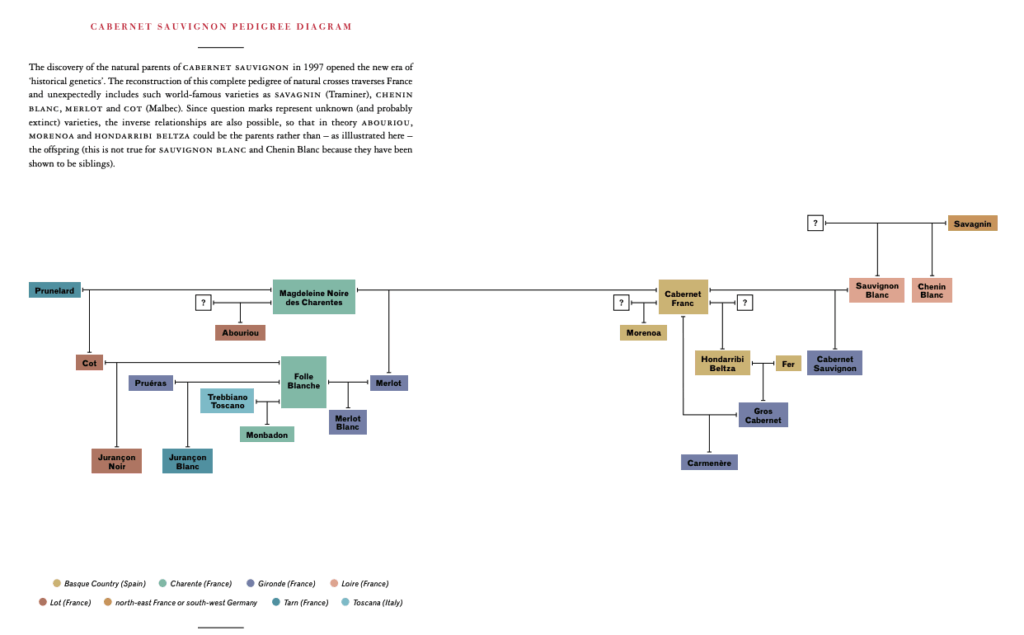
Chapter 2 – Archaeobiology and Ancient Wine
Gilgamesh
Beside the sea she lives, the woman of the vine, the maker of wine; Siduri sits in the garden at the edge of the sea. – The Epic of Gilgamesh

- The Search for Everlasting Life From The Epic of Gilgamesh, by The Epic of Gilgamesh, 2100BCE
- The origin myths of wine – by Stuart Walton, The World of Fine Wine, August 2022
- wikipedia.org/wiki/Epic_of_Gilgamesh
The earliest extant work of literature, the Sumerian Epic of Gilgamesh, tells of Gilgamesh’s lover Ishtar, a wine goddess, and of Siduri, a temple harlot who teaches civilized manners to the wild woodsman Enkidu and introduces him to wine drinking. – Elixir of life: In vino veritas, Francisco J Ayala
The Indiana Jones of Ancient Wine and Beer
Patrick Edward McGovern (1944 – 2025) was the scientific director of the Biomolecular Archaeology Laboratory for Cuisine, Fermented Beverages, and Health at the University of Pennsylvania Museum in Philadelphia, where he was also an adjunct professor of anthropology. In the popular imagination, he was known as the “Indiana Jones of Ancient Ales, Wines, and Extreme Beverages” – Wikipedia
- www.biomolecular-archaeology.com
- Patrick McGovern, the ‘Indiana Jones of Ancient Alcohol,’ Dies at 80, New York Times, Sep 2025
Books
- Ancient Wine: The Search for the Origins of Viniculture, University of Pennsylvania Press, 2019
- Ancient Brews: Rediscovered and Re-created, WW Norton, 2018
- Uncorking the Past: The Quest for Wine, Beer, and Other Alcoholic Beverages, University of California Press, 2009
For a complete list of books, articles and contributions, see
McGovern and Vouillamoz researched wine grape origins together.

By applying the previously developed LC/MS/MS wine markers method to a sample of a residue from the Tutankhamun’s amphora inscribed Shedeh, tartaric acid and syringic acid derived from malvidin-3-glucoside, markers for Vitis vinifera and the red cultivars, respectively, were identified. Our results definitively reveal that the ancient Egyptian highly valued Shedeh drink was a grape product, specifically made from red grapes.
- Wine of Egypts’ Golden Age: an Archaochemical Perspective by P. E. McGovern – The Journal of Egyptian Archaeology, January 1997
The quote “If I had a wine jar on my shoulder, my shoulder would not hurt” is a reference to an ancient Mesopotamian text known as “Dumuzid and His Sisters,” from the Sumerian mythology collection
“Whoever seeks the origins of wine must be crazy,” a Persian poet once declared, implying that simple enjoyment of this greatest gift of the grape ought to be enough.

Athenian stranger: How, then, shall we reassure him, and get him to sing? Shall we begin by enacting that boys shall not taste wine at all until they are eighteen years of age; (…) -this is a precaution which has to be taken against the excitableness of youth;-afterwards they may taste wine in moderation up to the age of thirty (…) But before proceeding I must add a crowning word about drinking. Like other pleasures, it has a lawful use; but if a state or an individual is inclined to drink at will, I cannot allow them. I would go further than Crete or Lacedaemon and have the law of the Carthaginians, that no slave of either sex should drink wine at all, and no soldier while he is on a campaign, and no magistrate or officer while he is on duty, and that no one should drink by daylight or on a bridal night. And there are so many other occasions on which wine ought to be prohibited, that there will not be many vines grown or vineyards required in the state.
The gal gestin was a Hittite military and administrative title literally meaning “chief of the wine stewards”. It is considered to be one of the most important and prestigious posts of the Hittite Kingdom.
Tastings

Chapter 3 – Cremisan
Therefore God give thee of the dew of heaven, and the fatness of the earth, and plenty of corn and wine – Genesis 27:28 (KJV)
- Divine Vintage: Following the Wine Trail from Genesis to the Modern Age, Joel Butler, Randall Heskett, 2012
- Wine, Soil, and Salvation in the Hebrew Bible and New Testament Mark Scarlata, Cambridge UP, 2025
Aren Maeir
- en.wikipedia.org/wiki/Aren_Maeir
- Want to Get Drunk Like a Philistine? Archaeologists’ Startup to Sell ‘Biblical Yeast’ to Make Beer, Haaretz 2023
Cremisan
- Beautiful and peaceful, Adam Montefiore, 2016
- A Palestinian Winemaker Carries On, Eric Asimov, New York Times, 2024
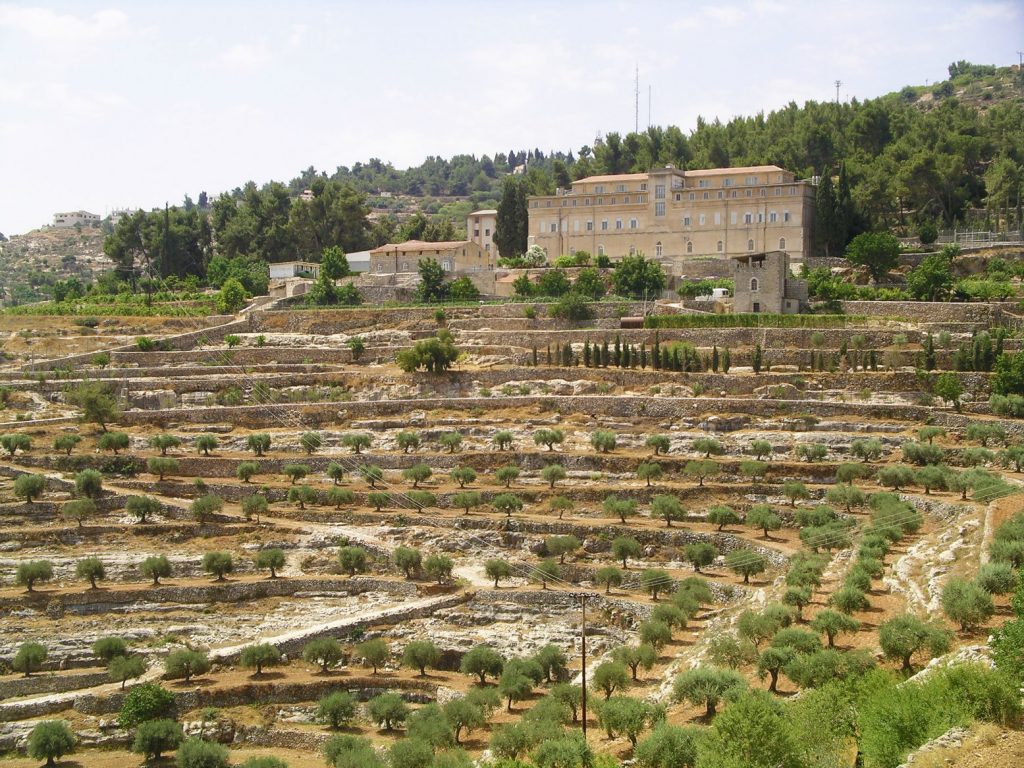
Isaiah 5:1–7 Song of the Vineyard
Let me sing for my beloved my love song concerning his vineyard: My beloved had a vineyard on a very fertile hill. He dug it and cleared it of stones, and planted it with choice vines; he built a watchtower in the midst of it, and hewed out a wine vat in it; and he looked for it to yield grapes, but it yielded wild grapes.
Revelation 14:19 (KJV)
And the angel thrust in his sickle into the earth, and gathered the vine of the earth, and cast it into the great winepress of the wrath of God. And the winepress was trodden without the city, and blood came out of the winepress, even unto the horse bridles, by the space of a thousand and six hundred furlongs.
Tastings

Chapter 4 – Israel’s Forgotten Grapes
I found Israel like grapes in the wilderness – Hosea 9:10 (KJV)
Gavot, Shivi Drori
Gvaot is a boutique, family, winery. the winery was founded in 2005 by entrepreneur Amnon Weiss and Chief Winemaker Prof. Shivi Drori, an agronomist and researcher in viticulture and oenology at Ariel University. A research study led by Dr. Drori, revealed approximately 60 ancient varieties of wine grapes from the Land of Israel in general, and Samaria in particular, from which wines have been produced for thousands of years.
- gvaot-winery.com
- ariel.academia.edu/ShiviDrori
- Collection and characterization of grapevine genetic resources (Vitis vinifera) in the Holy Land, towards the renewal of ancient winemaking practices, Elyashiv Drori, Nature 2017
Sean Myles
Grapevines started out in the Near East thousands of years ago and have kept lots of genetic variety even as people spread them through Europe and grew them by taking cuttings rather than seeds. Most grape varieties today are actually closely related—almost like one big family—because growers have mostly made new varieties by crossing a few favorite types, and then cloning those winners. This cloning kept grapes consistent and true to type but also limited truly new creations, so modern grape types haven’t used all the natural diversity that’s available; if grape growers want to tackle issues like disease or make better wines, they’ll need to tap into this hidden genetic potential in future breeding.
Noble Vine
Yet I had planted thee a noble vine, wholly a right seed: how then art thou turned into the degenerate plant of a strange vine unto me? – Jeremiah 2:21 (KJV)
French “noble” grape varieties: cabernet sauvignon, chardonnay, merlot, pinot noir, riesling, sauvignon blanc
Charles Darwin
Charles Darwin was fascinated by grapevines and used them as a powerful example to illustrate his ideas about the evolution and modification of species. In his famous book “The Variation of Animals and Plants Under Domestication,” Darwin discussed how cultivated grapes in Europe originated and the many ways grape varieties can vary when grown from seed, with new types produced almost every year. He studied grapevine tendrils, noticing how these climbing structures and fruiting stalks could show every possible transition between functions on a single plant, highlighting gradual evolution.
Darwin also wrote about grape diseases like powdery mildew and noted that American vine species were resistant, which later inspired European growers to graft their vines onto American rootstocks—a practice that helped save the wine industry from the devastating phylloxera pest and is still used today. He examined how different grape varieties suited different climates and soils, pointing out that adaptation and selection are key for wine quality and vineyard survival. Overall, Darwin’s observations and theories on grapes have had a lasting impact on modern viticulture, breeding, and disease management.
- Did Darwin save wine? Michael Summerfield, The World of Fine Wine, 2024
- Charles Darwin on wine, Richard Smart, Decanter, 2009
- Charles Darwin, On the Movements and Habits of Climbing Plants, 1865

Chapter 5 – The Wine Scientist
Mark the sun’s heat; how that to wine doth change,
Mix’d with the moisture filter’d through the vine
– Dante Alighieri, Canto 25, Purgatory, The Divine Comedy AD 1320

José Vouillamoz
.. one of the world’s leading authorities on the origin and parentage of grape varieties through DNA profiling. Swiss grape geneticist of international fame, trained with Prof Carole Meredith at the University of California at Davis (USA), he’s the co-author with the two Masters of Wine Jancis Robinson and Julia Harding of the multi-award winning book Wine Grapes (Allen Lane, 2012), the ultimate reference on all the grape varieties that are cultivated in the world. He is also author and co-author of several scientific papers and grape books.
Vouillamoz is a wine educator, a wine lecturer, as well as a member of the Académie Internationale du Vin, of the Académie du Vin de Bordeaux and of the Circle of Wine Writers.
Archaeological and historical data suggest that domestication of grapevine took place in the region spanning from the Fertile Crescent to South Caucasus, and from there spread in three directions: a Northern route, through Greece and the Roman empire to its western borders; a Southern route, through Egypt, the Arab territories all the way to Spain during the last Arab invasions; and a third route towards Asia.
Genetic structure in cultivated grapevines is linked to geography and human selection, Thierry Lacombe, Blaise Genna, 2013
Ampelography
Ampelography is the science of identifying, naming and classifying grape varieties through detailed analysis of the unique characteristics of the plant, its morphology and the different phases of its development. At the same time, the vine has its own extraordinary aesthetic and iconographic appeal. The exceptional convergence of the Authors’ scientific contributions and the dazzling splendour of the chromolithographs is thus what makes the three volumes of this Illustrated Historical Universal Ampelography so unique.
The work illustrates 551 cultivars, complete with entries describing each one and listing its synonyms.

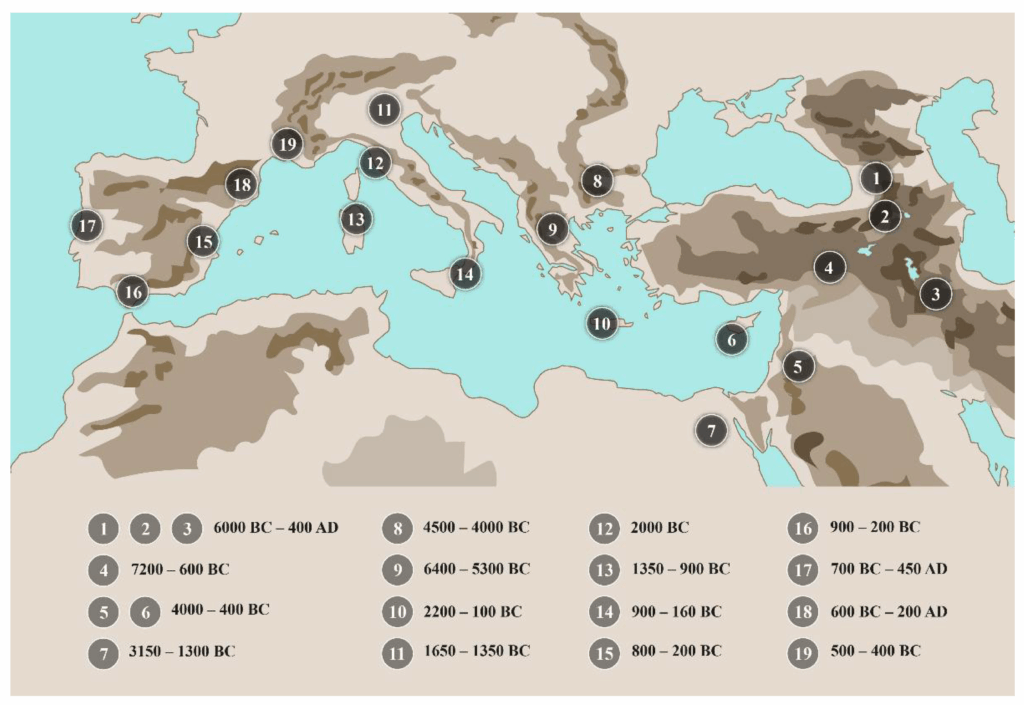
DNA
The first conclusive DNA evidence of a famous wine grape’s parentage came in 1997, showing that the red mainstay Cabernet Sauvignon had a white grape parent, Sauvignon Blanc, and a red one, Cabernet Franc.
A single pollen grain landed on a single flower and a single seed grew into a single plant. Every Cabernet Sauvignon vine across the world comes from this one original vine. – An Interview with Dr. Carole Meredith. GuildSomm 2012.
An analysis by American and French scientists finds that the chardonnay grape, considered one of the world’s greatest wine varieties, is a cross between the princely pinot and a grape deemed so coarse that it is no longer grown in France. The outcast parent is gouais blanc, its name derived from the word ”gou,” a medieval French term of derision whose precise meaning is now unknown. Thus, chardonnay, long thought by some experts to be a light-skinned version of pinot noir, turns out to be a cross between pinot and plonk.
For a Noble Grape, Disdained Parentage, Nicholas Wade, NYT, 1999
DNA showed that California’s Zin was the same as Italian Primitivo, and the same as a Croatian grape called Crlejenak Kastelanski. But the earliest name for the variety was Tribidag, dating back to the fifteenth-century Croatia.
Until the end of the nineteenth century, traditional vineyards were planted in what the French call en foule (in a crowd). Which means that in the same vineyard you have five, eight different varieties. Some would harvest at different times, some would harvest everything together. Skilled winemakers used the diversity to enhance flavors. The early grape varieties balanced out the more complex late ripeners, and sweet varieties balanced acidic ones. p 70.
VinEsch
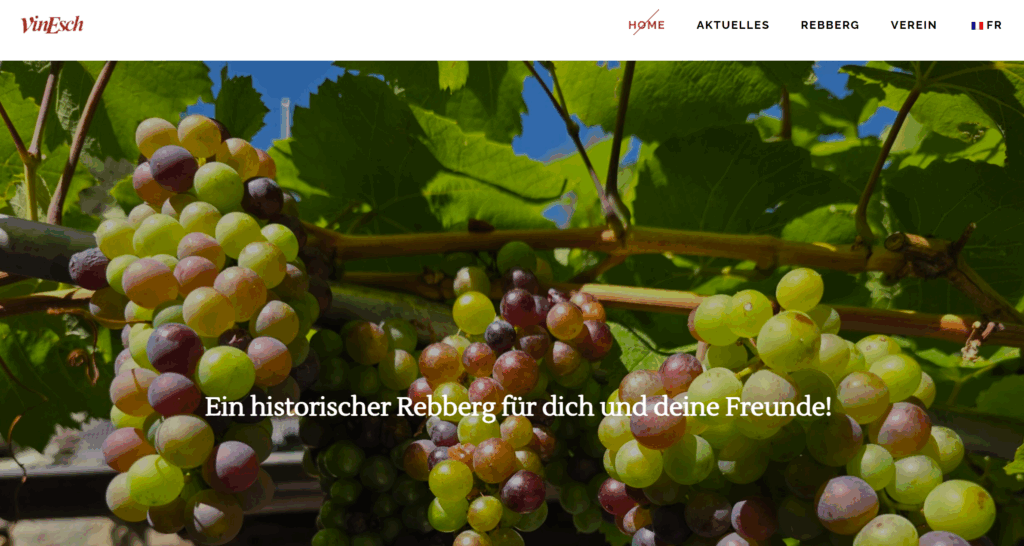
Tastings
- Chanton, Valais (Himbertscha, Lafnetscha)
- Simon Maye & Fils, Valais
- Romain Papilloud, Cave du vieux Moulin (Paien de Vétrox)
Chapter 6 – Flavor, Taste, and Money
About the science of flavor, taste, and marketing.
I rather like bad wine, said Mr. Mountchesney, one gets so bored with good wine – Benjamin Disraeli, Sybil, 1845
Neurogastronomy, Gordon Shepherd
Gordon Shepherd, a pioneering neuroscientist, is credited with founding the field of neurogastronomy, which explores how the brain creates the perception of flavor. In his groundbreaking work, Shepherd revealed that flavor is not simply a matter of taste but an intricate experience constructed by the brain, where smell—especially retronasal olfaction—plays the dominant role. He demonstrated that as food is consumed, the brain synthesizes input from multiple senses, especially olfactory signals, to produce a unified perception of flavor, impacting food choices, nutrition, and even eating behaviors. Shepherd connected these discoveries to important societal issues such as overeating, dietary preferences, and obesity, showing that understanding the neural circuitry behind flavor perception can help address health and nutrition challenges
- Neurogastronomy: How the Brain Creates Flavor and Why It Matters, Gordon M. Shepherd, Columbia University Press, 2011
- Neuroenology: How the Brain Creates the Taste of Wine, Gordon M. Shepherd, Columbia University Press, 2016
- The Science of Wine: From Vine to Glass, 2nd ed. UCP 2014
Don Quixote


- Wine-tasting: it’s junk science, David Derbyshire, Guardian, 2013
- Wine Appreciation: Connoisseurship or snobbery?, Barry C Smith, The World of Fine Wine, 2018
Baudelaire
Charles Baudelairs, Le Vin du Solitaire, Les Fleurs du Mal, 1857
Wine is like man himself: one never knows to what extent one may esteem or despise him, love or hate him, nor of what sublime actions or monstrous crimes he is capable. Let us not then be crueller towards wine than towards ourselves, let us treat him as an equal.
Enivrez-vous (Paris Spleen, 1864)
Il faut être toujours ivre. Tout est là: c’est l’unique question. Pour ne pas sentir l’horrible fardeau du Temps qui brise vos épaules et vous penche vers la terre, il faut vous enivrer sans trêve. Mais de quoi? De vin, de poésie ou de vertu, à votre guise. Mais enivrez-vous.
Wine Labels

Chapter 7 – The Caucasus
About a visit to Georgia, Alaverdi, and Mukhrani.
Alaverdi Monastery
Château Mukhrani
Tastings
- Alaverdi Monastery Cellar
- chateaumukhrani.com
- www.pheasantstears.com | @pheasants_tears
- winesofarmenia.store
Chapter 8 – Yeast, Co-Evolution, and Wasps
About yeast science, wild and commercial yeast, and GM.
God made yeast… and loves fermentation just as dearly as he loves vegetation – Ralph Waldo Emerson, New England Reformers, 1844
It was in vain urged by the housewife, that God made yeast, as well as dough, and loves fermentation just as dearly as he loves vegetation; that fermentation develops the saccharine element in the grain, and makes it more palatable and more digestible.
Are grapes responsible for all the marvelous flavors and aromas in wine–or is it yeast?
- Szymanski, E. (2023). From Terrain to Brain: Forays into the Many Sciences of Wine. Oxford University Press.
- Role of social wasps in Saccharomyces cerevisiae ecology and evolution, 2012
- Louis Pasteur, Études sur le vin, 1866
Chapter 9 – Aprodite, Women, and Wine
About a visit to Cyprus, Aphrodite, sommelier Georgios Hadjistylianou, Cypriot wines, Zambartas, Commandaria, Greeks and Romans.
She is… the moon and … men sacrifice to her in women’s dress, women in men’s, because she is held to be both male and female – Macrobius, Saturnalia, 3.8.2 AD 421
Philochorus quoque in Atthide eandem adfirmat esse lunam, et ei sacrificium facere viros cum veste muliebri, mulieres cum virili, quod eadem et mas aestimatur et femina.
Cyprus Wine
- Cyprus: An island apart, Paul White, The World of Fine Wine 2024
- Cyprus: Going native in the mountains, Paul White, The World of Fine Wine 2024
- Commandaria: Revival of the ancient ways, Paul White, The World of Fine Wine 2024
Bataille des Vins mentions Commandaria
Zambartas
Patrick McGovern
- Gilgamesh
- Macrobius, Saturnalia
- Juvenal
- Euripides, Bacchae
Dionysus
Part Two
Wine comes in at the mouth
And love comes in at the eye;
That’s all we shall know for truth
Before we grow old and die.
I lift the glass to my mouth,
I look at you, and I sigh.
– William Butler Yeats, A Drinking Song, 1910
Chapter 10 – Goliath, Foraging, and an Answer
About an foraging expedition in Israel with a food historian, revisiting Cremisan winery, and a visit to Gath.
Hide our ignorance as we will, an evening of wine soon reveals it.
– Heraclitus
Uri Mayer-Chissick
Chapter 11 – Italy, Leonardo, and Natural Wine
About a visit to Occhipinti (Sicily), Legeron, natural wine, and Leonardo’s vineyard in Milan.
I’ve drunk Sicilia’s crimson wine!
The blazing vintage pressed
From grapes on Etna’s breast,
What time the mellowing autumn sun did shine:
I’ve drunk the wine –
Bayard Taylor, “Sicilian Wine” 1854
Arianna Occhipinti
- www.agricolaocchipinti.it
- @ariannaocchipinti
- Natural Woman by Arianna Occhipinti
- wikipedia.org/wiki/Arianna_Occhipinti
Isabelle Legeron
- @isabellelegeron
- www.mastersofwine.org/isabelle-legeron-mw
- RAW WINE fair
- Natural Wine, An introduction to organic and biodynamic wines made naturally, Isabelle Legeron, 9781782498995, 2020
- How to understand natural wines, Decanter, 2011
Leonardo da Vinci
- wikipedia.org/wiki/Leonardo_da_Vinci%27s_Vineyard
- urbanvineyards.org/vigna/la-vigna-di-leonardo/
- Leonardo da Vinci wine’ re-created in central Milan, Chris Mercer, Decanter, 2019
- Leonardo e la sua vigna, recuperata grazie al DNA
- Leonardo da Vinci’s personal vineyard has been re-created, Economist, 2019
Chapter 12 – Wine and Foie Gras
About a visit to France: Plaimont, Bourdet-Pees, Smith Haut Lafitte, and an order of Foie Gras at Le Wine Bar (now closed).
When I praised the wine and asked him what it was, he said simply, “C’est du vin de ma mère!” – Henry James, A Little Tour in France, 1884
Plaimont
A whole region in southwest France has succesfully returned to making wine with their native grapes.
- www.plaimont.fcom
- Plaimont: Preserving the wisdom of the past – to shape the wines of the future, Decanter, 2025
- Visiting Plaimont, a super-co-op that has changed the face of southwest France, Lisse Garnett, Wineanorak.com, 2022
Vigne de Sarragachies
- La parcelle de vigne Monument Historique de Sarragachies, Vignoble de Saint Mont
- wikipedia.org/wiki/Vigne_de_Sarragachies
- WWC21 – Pédebernade, south-west France, jancisrobinson.com
Chapter 13 – The Science of Terroir
About terroir, definitions, science, and Columella (AD 4).
Wine is one of the most civilized things in the world and one of the natural things of the world that has been brought to the greatest perfection (…)
– Ernest Hemingway, Death in the Afternoon, 1932
- Rod Philips, The Myths of French Wine History, GuildSomm, 2016
- Mark Matthews, Terroir and Other Myths of Winemaking UCP, 2016
- Alex Maltman, The Role of Vineyard Geology in Wine Typicity, 2008
- Viticulture in Rome and the rediscovery of the Genius Loci
Chapter 14 – Coming Home, and Holy Land Wine
About a wine tasting of Georgian wines in New York hosted by Lisa Granik; corrections in the OCW; Holy Land wine; the taste of ancient wine. Interviews Granik, cites Philips and Lukasz.
Lisa Granik
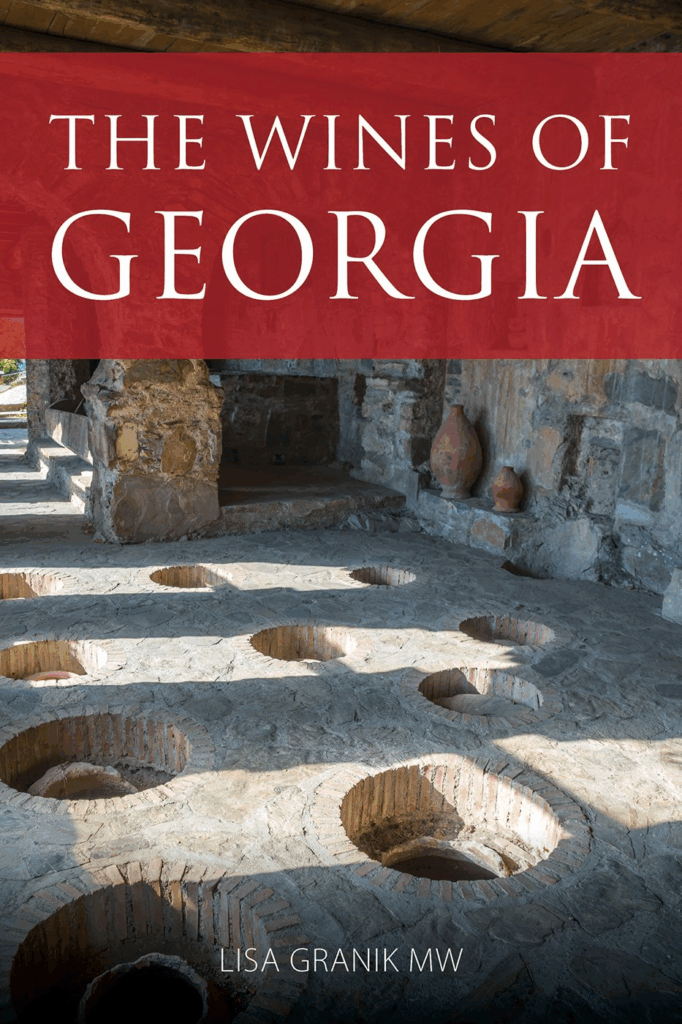
- Palestinian winemakers preserve ancient traditions, Kevin Begos, Associated Press, 2015
- What would Jesus drink? CCN
… and considered how the hotel room wine ultimately set me off like a viticultural Quixote, traveling ancient wine routes, championing obscure grapes and railing against the glut of famous French varieties.


Chapter 15 – American Wine Grapes
About native American grapes, grape-breeding programs (UM, University of Minnesota), Deidre Heekin and Vermont wines, Randall Graham and Popelouchum (sowing seeds), Andy Walker UCD, Kevin Lynch, and Beckham Estate and Caucasus-style clay amphoras.
- Dufour and the Beginning of Commercial Production – Pinney, Thomas. A History of Wine in America: From the Beginnings to Prohibition. Berkeley: University of California Press, 1989.
- The first commercial winery in the United States – established by a Swiss immigrant!
- The American Vine-dresser’s Guide, Jean-Jacques Dufour, 1826

Deirdre Heekin, La Garagista
- www.lagaragista.com
- A Top 10 Wine List So Good, It Takes 12 Bottles to Hold It, Eric Asimov, NYT, 2015
- At La Garagista, Hybrid Grapes Stand Up to Vermont’s Elements, Eric Asimov, NYT, 2015
- Deidre Heekin, Libation: A Bitter Alchemy, Chelsea Green Publishing Co, 2009
- Deirdre Heekin, An Unlikely Vineyard: The Education of a Winegrower and Her Quest for Terroir, Chelsea Green Publishing Co, 2014
- illdrinktothatpod.com/episode/59-deirdre-heekin
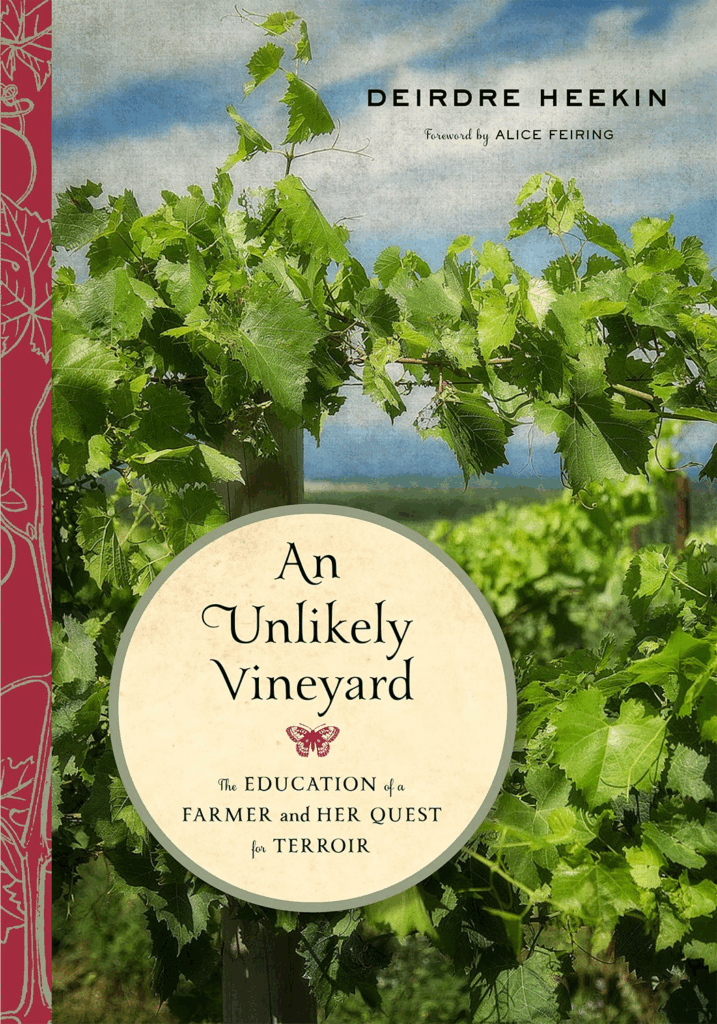
Randall Grahm
- His Big Idea Is to Get Small, Eric Asimov, NYT, 2009
- wikipedia.org/wiki/Randall_Grahm
- linkedin.com/in/randall-grahm-7785a411/
- Randall Grahm: From Rhône Ranger to terroir hunter, Anthony Rose, The World of Fine Wine, 2025
- www.bonnydoonvineyard.com
- \www.popelouchum.com
Andrew Walker
Kevin Lynch
Beckham Estate & Amphora
- www.beckhamestatevineyard.com
- Coming Soon To A Wine Near You: Ancient Amphorae, Cathy Huyghe, Forbes, 2014
- Oregon’s Artful Winemaker, Wine Enthusiast, 2023
Chapter 16 – The Dark Side of Wine
About the Ava winery, Vinome, Vouillamoz, climate change, and Grahm.
There is more philosophy in a bottle of wine than all the books – Louis Pasteur
Il y a de l’esprit au fond de ces cent litres plus que dans tous les livres de philosophie du monde. (source)
Ava Winery
Ava Winery, the biotech startup known for its synthetic wine created from molecular components rather than grapes, rebranded as Endless West in 2018 and shifted its focus away from wine toward replicating other alcoholic beverages, primarily spirits like whiskey and sake
- Ava Winery
- Ava promises to clone high-end wines without using any grapes, TechCrunch
- The Tastes of Wine: Towards a Cultural History, Steven Shapin, 2012
Chapter 17 – Grapetionary
About Grapetionary (a grape variety for each letter of the alphabet) and the growing interest in different grapes and wines.
It was like discovering a wine-cellar filled with bottles of amazing wine of a kind and flavour never tasted before. It quite intoxicated me … – J.R.R. Tolkien, Letter to W.H. Auden, 1955
Jason Tesauro
- Grapetionary A-Z breaks ground in Atlanta, jancisrobinson.com, 2016
- The Most Unique Wine Event I’ve Ever Experienced, Cathy Hughe, Forbes, 2016
- From aglianico to zibibbo, he poured an alphabetical tour of wine grapes, Washington Post, 2016
- jasontesauro.substack.com
- www.themodgent.com/jason-tesauro
Chapter 18 – The First Grapes, and Tasting the Past
About grape paleobotany, and research by Drori and Vouillamoz.
I am lost in this city and can no longer fine the Winehouse door. Please help me to find that street again shere Love resides. – Hafiz, River of Wine, ca. 1350
- World’s oldest-known grape fossils found in India, 2013
- Oldest fruits of the grape family (Vitaceae) from the Late Cretaceous Deccan cherts of India, Steven Manchester, NLM, 2013
- Collection and characterization of grapevine genetic resources (Vitis vinifera) in the Holy Land, towards the renewal of ancient winemaking practices, Elyashiv Drori, Nature 2017
